Sylvain Leduc, executive vice president and director of research at the Federal Reserve Bank of San Francisco, stated his views on the current economy and the outlook as of April 2, 2020.
-
The human toll from the coronavirus disease (COVID-19) pandemic continues to
rise around the world. As authorities implement social distancing
restrictions to mitigate the spread of the coronavirus, the associated
economic costs are becoming more apparent. How the economy will fare over
the next several quarters remains highly uncertain, however. Much hinges on
how the virus spreads and evolves over time, as well as on the effectiveness
of social distancing and shelter-in-place measures. This uncertainty
necessarily clouds the economic outlook. -
The uncertainty about the coronavirus is spreading through financial markets
as well. The Chicago Board Options Exchange Volatility Index, or VIX, is
frequently used as a measure of uncertainty based on equity market
volatility. This so-called fear index measures investors’ perceptions of the
30-day-ahead volatility of the S&P 500. The VIX shot up recently to a level
even higher than that experienced at the height of the 2008 financial
crisis. While the VIX has declined from its recent peak, it remains elevated
by historical standards. -
This uncertainty has impeded the proper functioning of the financial system.
Using its emergency powers, the Federal Reserve set up facilities to
increase liquidity in several segments of the financial system, including
money market mutual funds, the commercial paper market, and the corporate
bonds markets, among others. The Fed also resumed buying Treasury securities
and agency mortgage-backed securities and reduced the federal funds rate to
near zero. -
Equity prices have fallen sharply since the end of February and the market
has remained very volatile. Still, the passage of the Coronavirus Aid,
Relief, and Economic Security (CARES) Act has helped the stock market recoup
some of its losses. The $2 trillion relief package, at roughly 9% of GDP,
includes several measures targeted to alleviate the adverse economic impact
on households, businesses, and workers. This assistance should provide some
support to the economy in the months ahead. -
Spreads on riskier assets, such as low-grade corporate bonds, have remained
high. Substantially higher borrowing costs might pose challenges to highly
indebted corporations. Rollover risk is somewhat limited in the near term,
as only 2% of speculative-grade corporate bonds are expected to mature
during the second quarter. However, corporations currently in need of
funding are facing much direr financial conditions. -
The current financial conditions are also extremely challenging for small-
and medium-size businesses, particularly since roughly half of them only
have enough cash on hand to cover operating expenses for about one month,
according to a recent JPMorgan Chase Institute report. Payroll reductions at
small and medium-size businesses could have a large impact on the labor
market, as these businesses account for 47% of total employment. -
With social distancing measures and shelter-in-place orders, firms have had
to rapidly shed workers on an extraordinary scale. Payrolls contracted by
roughly 700,000 in March and the unemployment rate rose from 3.5% to 4.4%.
However, this captures only part of the worsening of labor market
conditions, since the labor market surveys use the middle of the month as a
reference point to compile the data. Thus, this snapshot for March occurs
before most social distancing measures were widely implemented. Indeed,
jobless claims surged to unprecedented levels in the last half of March,
with more than 10 million workers filing new claims. Hence, the unemployment
rate is likely to rise much more in the following months. -
Consumer confidence also fell in March, as economic activity in several
parts of the country stalled and the economic outlook darkened. Consumer
confidence is likely to decline further in the months ahead as labor market
conditions worsen. -
The pandemic is also adversely affecting manufacturing activity around the
world. While China’s purchasing managers index (PMI) rebounded last month as
the country’s social distancing measures were eased, the PMIs in the United
States, Japan, and the euro area fell sharply. -
The uncertainty around the evolution of the pandemic heavily clouds the
outlook. As a result of the necessary social distancing measures, the
contraction in economic activity will be deep in the second quarter,
accompanied by a steep rise in unemployment. How the economy evolves
thereafter will largely depend on the effectiveness of social distancing
measures and whether the virus weakens during the summertime or experiences
a second burst in the fall. It will also depend on whether social
interactions quickly resume once the virus abates. Given the rareness of
similar events for comparison, our understanding of these issues is too
imprecise to provide clear guidance about the evolution of the economy later
this year and the next. -
In the best scenario, the virus is sufficiently contained by the end of the
second quarter that activity can quickly resume in the second half of the
year. The strength of the rebound will depend on the effectiveness of
monetary policy accommodation and the fiscal relief package in providing
sufficient support to households and firms to avoid typical recessionary
dynamics. -
However, if the social measures last substantially longer, more firms may go
out of business and more workers may remain or become unemployed, reducing
aggregate demand further and lengthening the downturn. The rebound in
activity would be more muted in this case, as relationships between workers,
firms, and banks would need to be reestablished. -
All told, the steep decline in economic activity suggests that inflation is
likely to decline this year and remain substantially below target in the
near future.
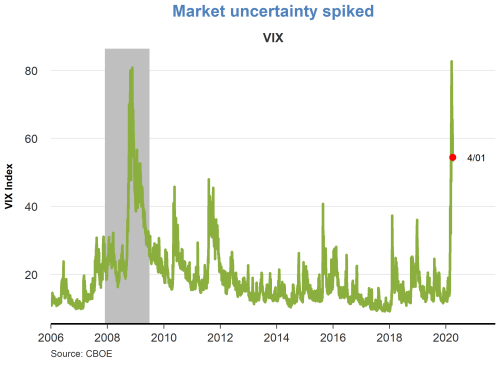
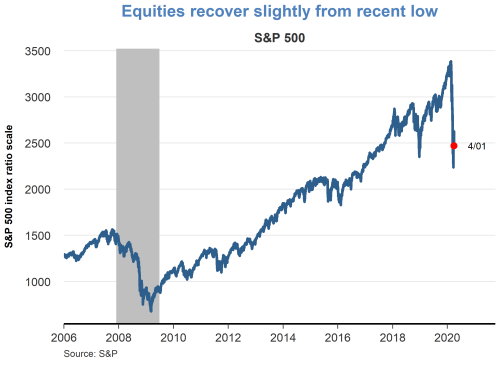
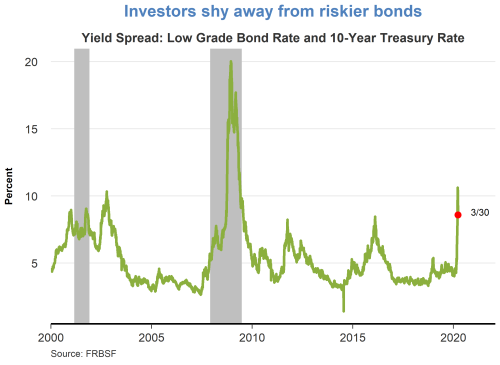
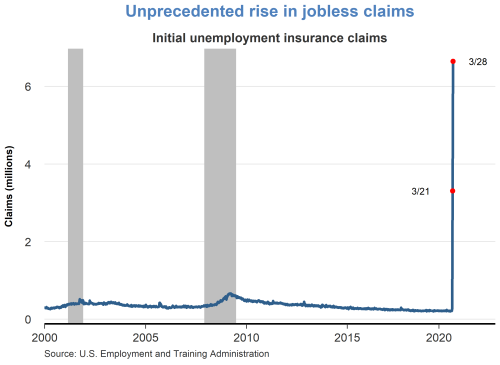
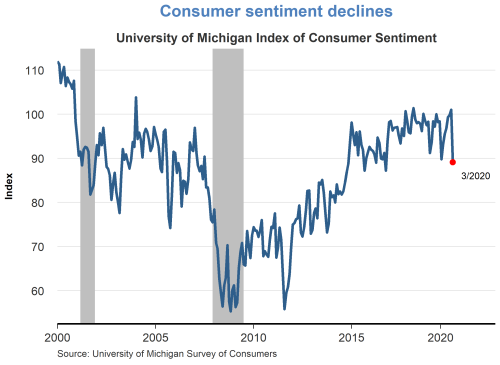
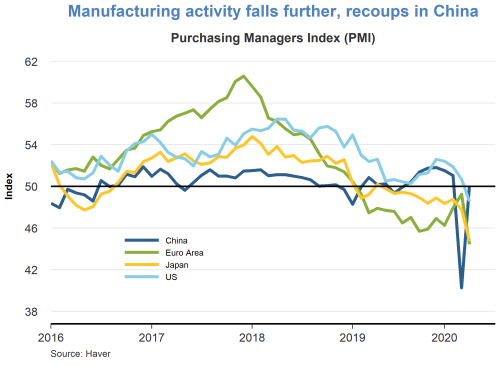
TopicsInflation
The views expressed are those of the author, with input from the forecasting staff of the Federal Reserve Bank of San Francisco. They are not intended to represent the views of others within the Bank or within the Federal Reserve System. FedViews appears eight times a year, generally around the middle of the month. Please send editorial comments to Research Library.
